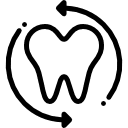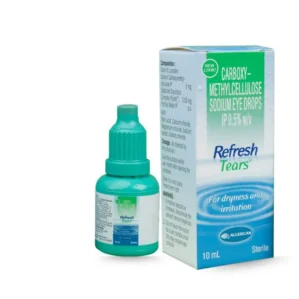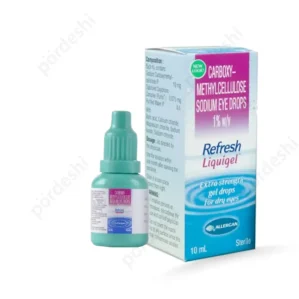Eye care
Showing all 4 resultsSorted by latest
Allergan Refresh Tears
Original price was: 350.00৳.345.00৳Current price is: 345.00৳.Systane Ultra Lubricant Eye Drops
Original price was: 800.00৳.699.00৳Current price is: 699.00৳.Alcon Tears Naturale Free Lubricant Eye Drops, 32 Single-use Vials
Original price was: 1,900.00৳.1,745.00৳Current price is: 1,745.00৳.ALLERGAN Refresh Liquigel
Original price was: 800.00৳.745.00৳Current price is: 745.00৳.The Comprehensive Guide to Eye Care: Tips for Maintaining Optimal Eye Health
Eye health is a crucial yet often overlooked aspect of overall wellbeing. Our eyes are essential not only for seeing the world but for interpreting and interacting with it. From reading the fine print on contracts to witnessing the beauty of a sunset, good vision enriches our lives in immeasurable ways. However, many people take their eye health for granted until problems arise. This blog post explores the importance of eye care, common eye diseases, and actionable tips to maintain optimal eye health.
Fortunately, with platforms like pordeshi, purchasing top-quality eye and ear care products online in Bangladesh has become more accessible and convenient than ever.
Introduction: The Importance of Eye Care
Taking care of your eyes is as essential as looking after any other part of your body. Your eyes allow you to see and make sense of the world, playing a crucial role in your quality of life. Neglecting eye care can lead to various issues, ranging from mild discomfort to severe vision loss. Regular eye checks and adopting healthy habits can prevent or mitigate these problems, ensuring that you maintain your vision for as long as possible.
Common Eye Diseases and the Necessity of Early Detection
Cataracts
Cataracts are one of the most common eye conditions, particularly among older adults. They cause clouding of the eye lens, leading to decreased vision. The good news is that cataracts can be treated effectively through surgery.
Glaucoma
Glaucoma is a condition characterized by increased pressure within the eye, which can damage the optic nerve. It is a leading cause of blindness if not treated promptly. Early detection through regular eye exams can help manage glaucoma effectively.
Age-related Macular Degeneration (AMD)
AMD affects the macula, the central part of the retina, leading to loss of central vision. While there is no cure for AMD, early detection can help slow its progression through lifestyle changes and medical treatments.
Diabetic Retinopathy
This condition affects individuals with diabetes and can cause severe vision loss if left untreated. Regular eye exams are crucial for early detection and management of diabetic retinopathy.
Frequency of Eye Exams and Signs That Should Prompt a Visit
Recommended Eye Exam Schedule
- Children: Vision screenings should start at an early age, with comprehensive exams around age 3 and regular follow-ups as recommended by a healthcare provider.
- Adults: For those without vision problems, eye exams every two years are sufficient. However, individuals over 60 or those with risk factors should consider annual exams.
Signs You Need an Eye Exam
- Blurry vision
- Frequent headaches
- Difficulty seeing at night
- Eye strain or discomfort
- Sudden changes in vision, including flashes of light or floaters
Eye Care Tips for Maintaining Good Vision and Overall Eye Health
Diet and Nutrition
Eating a balanced diet rich in fruits, vegetables, and omega-3 fatty acids can significantly impact eye health. Foods like salmon, spinach, and carrots are particularly beneficial.
Weight Management and Exercise
Maintaining a healthy weight can reduce the risk of diabetes, which in turn decreases the risk of diabetic retinopathy and other vision problems. Regular exercise also promotes overall health, including eye health.
Eye Protection
Wear sunglasses with UV protection to shield your eyes from harmful sun rays. Additionally, use protective eyewear when engaging in activities that pose a risk to your eyes.
Avoid Smoking
Smoking increases the risk of developing cataracts, macular degeneration, and optic nerve damage. Quitting smoking can significantly improve your overall eye health.
Family Medical History
Knowing your family’s medical history can help you understand your risk factors for developing eye diseases. Share this information with your eye care provider for personalized advice and treatment plans.
Contact Lens Hygiene
If you wear contact lenses, follow proper hygiene practices to prevent eye infections. Clean and store your lenses as recommended by your optometrist.
Digital Eye Strain
With the increasing use of digital devices, digital eye strain has become a common issue. Follow the 20-20-20 rule: every 20 minutes, look at something 20 feet away for at least 20 seconds to reduce eye strain.
Good Sleep
Adequate sleep is essential for overall health, including eye health. Lack of sleep can lead to eye strain and discomfort. Aim for 7-9 hours of quality sleep every night.
Eye Tests and Exams: What to Expect
Visual Field Test
This test measures your peripheral vision and helps detect conditions like glaucoma.
Visual Acuity Test
You’ll read an eye chart to check how well you see at various distances.
Tonometry
This test measures the pressure inside your eye, which is crucial for detecting glaucoma.
Dilation
Eye drops will dilate your pupils, allowing the optometrist to examine the retina, macula, and optic nerve more thoroughly.
Categories of Eye Care Products
Contact Lenses
Options include soft, rigid, daily disposable, colored, and toric lenses for various vision correction needs.
Eye Drops
Lubricating, allergy, rewetting, and redness relief eye drops are available to soothe and alleviate various eye conditions.
Eyeglasses
Prescription and non-prescription glasses come with various lens coatings and frame styles to match your needs and preferences.
Eye Vitamins and Supplements
Nutritional supplements support eye health and help prevent eye diseases.
Eye Masks
Products designed to relieve eye strain, dryness, and puffiness.
Eye Hygiene Products
Eyelid wipes, eye masks, and eye washes clean and refresh the eye area.
Lens Cleaning Solutions
These solutions keep your lenses free from dust and smudges.
Proven Yoga Poses to Improve Eyesight
Bhastrika Pranayama (Bellows Breath)
This breathing exercise increases oxygen supply to the eyes, improving overall eye health.
Upward Dog (Urdhva Mukha Svanasana)
This pose enhances blood flow to the eyes, promoting better vision.
Sarvangasana (Shoulder Stand)
This inverted pose increases blood circulation to the head and eyes.
Shavasana (Corpse Pose)
This relaxation pose helps relieve eye strain and reduce stress.
Presbyopia: Causes, Symptoms, and Treatment
Causes
Presbyopia occurs when the eye lens loses its flexibility, making it difficult to focus on close objects. This condition typically affects individuals over 40.
Symptoms
- Eye strain after reading
- Throbbing headaches when trying to view nearby objects
- Difficulty focusing on small print
Treatment
- Prescription eyeglasses or contact lenses
- Reading glasses
- Surgical options like LASIK
Are Your Eyes Giving You a Headache?
Eye Strain
Problems with focusing mechanisms can cause eye strain, leading to headaches.
Astigmatism
This condition causes blurred vision and can result in headaches due to eye strain.
Long-Sightedness and Presbyopia
Both conditions cause difficulty focusing on close objects, leading to eye strain and headaches.
Digital Devices
Prolonged use of digital devices can cause digital eye strain, resulting in headaches.
How to Buy Eye and Ear Care Products Online at pordeshi
Purchasing products online from pordeshi is simple, thanks to its user-friendly interface and secure transactions. Customers can browse through an extensive catalog, select their needed products, and enjoy quick delivery and easy returns.
Pordeshi picks best eye drops in Bangladesh
Clear Eyes Redness Relief Eye Drops
Systane Ultra Lubricant Eye Drops
HIMALAYA Ophtha Care Eye Drops
Conclusion: The Importance of Proactive Eye Care
Proactive eye care is essential for maintaining good vision and overall eye health. Regular eye exams, a healthy lifestyle, and protective measures can help prevent or manage common eye diseases. By adopting these habits, you can ensure that your eyes remain healthy and your vision stays sharp for years to come.
Taking care of your eyes should be a lifelong commitment. With the right knowledge and practices, you can enjoy the benefits of good vision and eye health. So, make an appointment with your eye care provider today and take the first step towards a lifetime of clear, healthy vision.
Remember, your eyes are your windows to the world. Treat them with the care and attention they deserve.
Frequently Asked Questions About Eye Health
1. How Often Should I Get My Eyes Checked?
Answer: It’s important to follow the recommendations of your healthcare provider for eye exams. Generally, adults should have a comprehensive eye exam every one to two years, depending on age, risk factors, and whether you wear corrective lenses. Children should have their vision checked regularly, starting from infancy.
2. What Are Common Symptoms of Eye Problems?
Answer: Symptoms such as blurred vision, eye pain, redness, double vision, floaters, and frequent headaches could indicate eye problems. If you experience any of these symptoms, consult an eye care professional promptly.
How Often Should I Get My Eyes Checked?
The frequency of eye exams depends on various factors, including age, health, and risk of developing eye problems. Generally:
- Children: Vision screenings are typically performed at school or during pediatric check-ups.
- Adults: Those without vision problems should have an eye exam every two years. However, adults with eye conditions or at higher risk for eye diseases should have more frequent exams.
- Seniors: People aged 60 and above should have annual eye exams.
3. What Are the Most Common Eye Diseases?
Some common eye diseases include:
- Cataracts: Clouding of the eye’s lens, leading to blurred vision.
- Glaucoma: Damage to the optic nerve due to high eye pressure.
- Macular Degeneration: Deterioration of the central portion of the retina.
- Diabetic Retinopathy: Damage to the blood vessels in the retina caused by diabetes.
What Are the Symptoms of Presbyopia?
Presbyopia is a common age-related condition where the eye’s lens becomes less flexible, making it difficult to focus on nearby objects.
What Types of Eye Exams Should I Expect?
A comprehensive dilated eye exam includes:
- Visual Field Test: Measures peripheral vision to detect glaucoma.
- Visual Acuity Test: Measures how well you see at various distances.
- Tonometry: Measures eye pressure to detect glaucoma.
- Dilation: Eye drops are used to widen pupils for a complete examination of the retina, macula, and optic nerve.
- Eye strain after reading
- Throbbing headaches after attempting to view close objects
How Can Digital Devices Affect My Eyes?
Prolonged use of digital devices can lead to digital eye strain, causing symptoms like dry eyes, blurred vision, and headaches. To minimize strain, follow the 20-20-20 rule: every 20 minutes, look at something 20 feet away for at least 20 seconds.



 Hair Care
Hair Care
 Vibrating Rings
Vibrating Rings

 Oral Care
Oral Care




